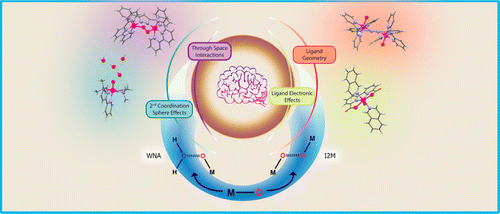One clean alternative to fossil fuels would be to split water using sunlight. However, to achieve this goal, researchers still need to fully understand and control several key chemical reactions. One of them is the catalytic oxidation of water to molecular oxygen, which also occurs at the oxygen evolving center of photosystem II in green plants and algae. Despite its importance for biology and renewable energy, the mechanism of this reaction is not fully understood.
Transition metal water oxidation catalysts in homogeneous media offer a superb platform for researchers to investigate and extract the crucial information to describe the different steps involved in this complex reaction accurately. The mechanistic information extracted at a molecular level allows researchers to understand both the factors that govern this reaction and the ones that derail the system to cause decomposition. As a result, rugged and efficient water oxidation catalysts with potential technological applications can be developed.
In this Account, we discuss the current mechanistic understanding of the water oxidation reaction catalyzed by transition metals in the homogeneous phase, based on work developed in our laboratories and complemented by research from other groups. Rather than reviewing all of the catalysts described to date, we focus systematically on the several key elements and their rationale from molecules studied in homogeneous media. We organize these catalysts based on how the crucial oxygen–oxygen bond step takes place, whether via a water nucleophilic attack or via the interaction of two M–O units, rather than based on the nuclearity of the water oxidation catalysts. Furthermore we have used DFT methodology to characterize key intermediates and transition states. The combination of both theory and experiments has allowed us to get a complete view of the water oxidation cycle for the different catalysts studied. Finally, we also describe the various deactivation pathways for these catalysts.
